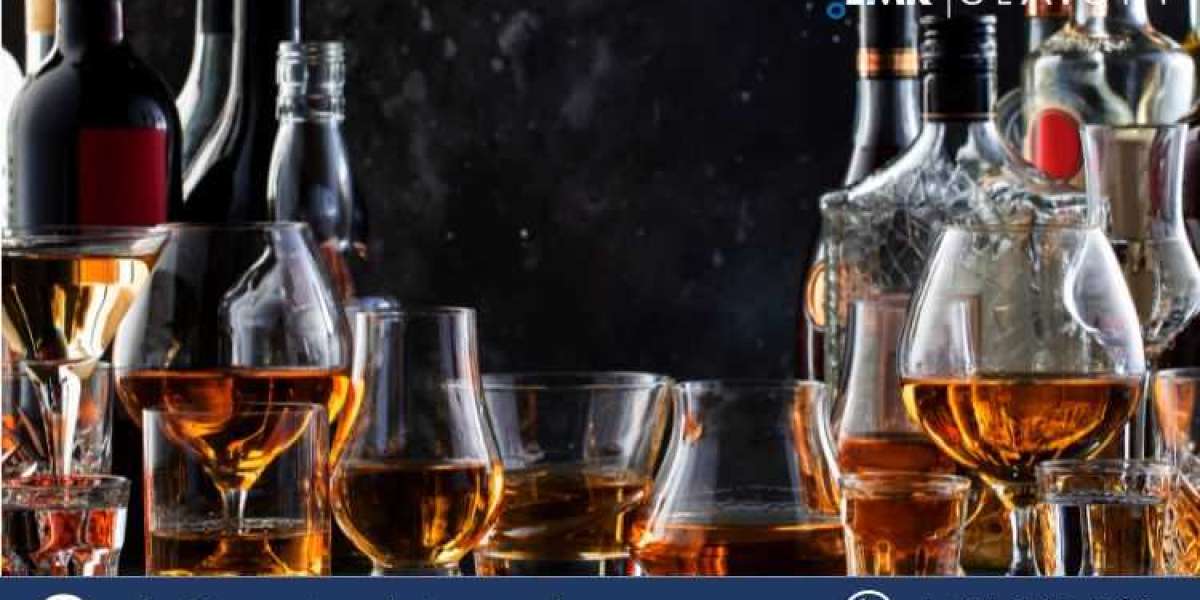Market Overview
The dark spirits market size reached a value of approximately USD 105.10 billion in 2024, driven by the growing popularity of premium craft spirits, particularly among millennials. Brands such as Bulleit Bourbon and Havana Club Rum have gained significant traction due to their artisanal production methods and distinctive flavors. This trend is further supported by the increasing interest in spirit tourism, with distilleries like Jack Daniel's in Tennessee offering immersive tours and tastings. Additionally, the rise in disposable income, particularly in emerging economies, has encouraged consumers to explore high-end and aged spirits, contributing to the market's expansion. As a result, the market is projected to grow at a CAGR of 6.50% over the forecast period, reaching an estimated USD 197.29 billion by 2034.
Market Trends
The rising consumer preference for premium and craft dark spirits is a key trend shaping the market. Consumers are increasingly drawn to high-quality, small-batch whiskey, rum, and brandy that emphasize unique flavor profiles and heritage production methods. The expansion of cocktail culture, both in bars and at-home consumption, has further fueled demand for aged and flavored spirits. Additionally, sustainability and transparency in production, such as organic ingredients and eco-friendly packaging, are gaining importance as brands seek to cater to environmentally conscious consumers.
E-commerce and digital marketing are also playing a crucial role in driving sales, with online platforms enabling direct-to-consumer purchases and providing access to a wide variety of premium spirits. Social media influencers and brand collaborations with mixologists have further amplified consumer engagement, making dark spirits more accessible to a younger audience. Subscription-based alcohol delivery services and virtual tasting experiences have also contributed to market growth. The increasing availability of dark spirits in emerging markets, coupled with a strong preference for Western brands, has opened new growth opportunities for industry players.
Market Growth
The dark spirits market is experiencing steady expansion due to a combination of evolving consumer preferences and increasing disposable incomes, particularly in emerging economies. The demand for premium and ultra-premium spirits continues to rise as consumers show greater willingness to invest in high-quality alcoholic beverages. This shift has led brands to innovate, offering aged and limited-edition products that cater to the sophisticated palates of modern consumers. Additionally, the growing influence of luxury branding and exclusive releases has driven a surge in high-end spirit consumption.
Spirit tourism is another significant driver of market growth, as consumers seek immersive experiences such as guided distillery tours, whiskey tastings, and educational workshops. Countries with a rich distillation heritage, including Scotland, the United States, and Japan, have benefited from a surge in visitors eager to learn about traditional production methods. Moreover, the expansion of duty-free retail at international airports has provided another avenue for premium dark spirit sales, further contributing to overall market growth. The introduction of personalized spirits, where consumers can customize their bottles with unique labels and age their own whiskey, has also gained popularity, offering an additional revenue stream for distilleries.
Market Segmentation
By Type
Whiskey: One of the largest segments, whiskey is produced using various grains like barley, corn, rye, and wheat, with aging processes that enhance its complex flavors. Popular varieties include Scotch whisky, Irish whiskey, bourbon, and Japanese whisky. The demand for premium and aged whiskey is particularly strong among connoisseurs and collectors.
Rum: Derived from sugarcane byproducts like molasses, rum is known for its sweet and smooth profile. It has gained significant traction in the premium segment, with spiced and aged varieties attracting a growing consumer base. The Caribbean remains a key region for rum production, with brands emphasizing traditional distillation techniques.
Brandy: Distilled from fermented fruit juice, typically grapes, brandy includes varieties such as Cognac and Armagnac from France. Aged brandies are gaining popularity in high-end markets, particularly among consumers seeking sophisticated and smooth spirits.
By Distribution Channel
On-Trade (Bars, Restaurants, Hotels): This channel caters to social drinkers and mixology enthusiasts who prefer to enjoy dark spirits in professional settings. High-end establishments often feature premium and craft dark spirits, with a rising trend of signature cocktails that highlight aged and specialty spirits.
Off-Trade (Retail Stores, Supermarkets, Online Sales): This segment dominates in terms of volume sales, as consumers increasingly purchase dark spirits for home consumption. The rise of e-commerce and alcohol delivery services has made premium spirits more accessible, while supermarkets and liquor stores remain the most common purchasing points for mainstream brands.
Regional Analysis
- North America – Driven by a strong whiskey culture, premiumization trends, and innovation in aging techniques.
- Europe – Home to well-established whiskey and brandy markets, with increasing consumer interest in organic and craft spirits.
- Asia-Pacific – Rapidly expanding market, fueled by rising disposable incomes, Western influence, and growing whiskey consumption in countries like India and China.
- Latin America – Increasing adoption of dark spirits, particularly rum, with a focus on traditional production methods.
- Middle East Africa – Growth is driven by urbanization, tourism, and increasing acceptance of premium alcoholic beverages.
Market Dynamics
SWOT Analysis
- Strengths: Growing demand for premium and craft spirits, strong brand heritage, expansion of spirit tourism, increasing digital marketing influence.
- Weaknesses: High taxation, regulatory restrictions, competition from other alcoholic beverages, supply chain disruptions.
- Opportunities: Innovation in flavors and production, rise of e-commerce, increasing disposable incomes in emerging markets, personalized and limited-edition spirits.
- Threats: Economic downturns, changing regulatory environments, increasing health consciousness among consumers, potential supply shortages.
Porter’s Five Forces Analysis
- Bargaining Power of Suppliers: Moderate, due to the availability of key ingredients like grains, sugarcane, and grapes, but fluctuating agricultural yields can impact supply stability.
- Bargaining Power of Buyers: High, as consumers demand quality, variety, and transparency, with increasing brand loyalty to premium spirits.
- Threat of New Entrants: Moderate, with regulatory barriers, high capital requirements, and strong brand loyalty posing challenges to new market players.
- Threat of Substitutes: High, due to competition from other alcoholic and non-alcoholic beverages, particularly RTD (ready-to-drink) alternatives.
- Industry Rivalry: Intense, with key players competing on branding, innovation, and pricing, leading to continuous product development.
Key Indicators for Demand
- Increasing preference for premium and craft spirits
- Growth in cocktail culture and mixology trends
- Impact of social media and digital marketing in shaping consumer choices
- Expansion of experiential marketing and spirit tourism
- Rising consumer awareness regarding heritage production methods and aged spirits
Key Indicators for Price
- Fluctuations in raw material costs (grains, sugarcane, grapes)
- Changes in taxation and regulatory policies
- Branding and marketing expenses influencing final retail prices
- The role of limited-edition releases and aged spirits in premium pricing strategies
- Global supply chain dynamics affecting production costs
Value Chain Analysis
The value chain of the dark spirits market includes several critical stages, from raw material sourcing to final product distribution. The process begins with the procurement of essential ingredients such as grains, sugarcane, and grapes, which are then distilled and aged using traditional or modern techniques. The next stage involves packaging and branding, where companies focus on innovative bottle designs and eco-friendly materials. Distribution plays a crucial role, with major brands leveraging both on-trade and off-trade channels to reach consumers effectively. Finally, marketing and consumer engagement strategies, including social media campaigns, influencer partnerships, and tasting events, help build brand loyalty and drive sales. The addition of limited-edition collections and premium tasting experiences has further enhanced consumer engagement and increased revenue potential.
Competitive Landscape
- Anheuser-Busch InBev SA/NV
- Asahi Group Holdings, Ltd.
- Kirin Brewery Company, Limited
- Suntory Holdings Limited
- Diageo Plc
- Others








